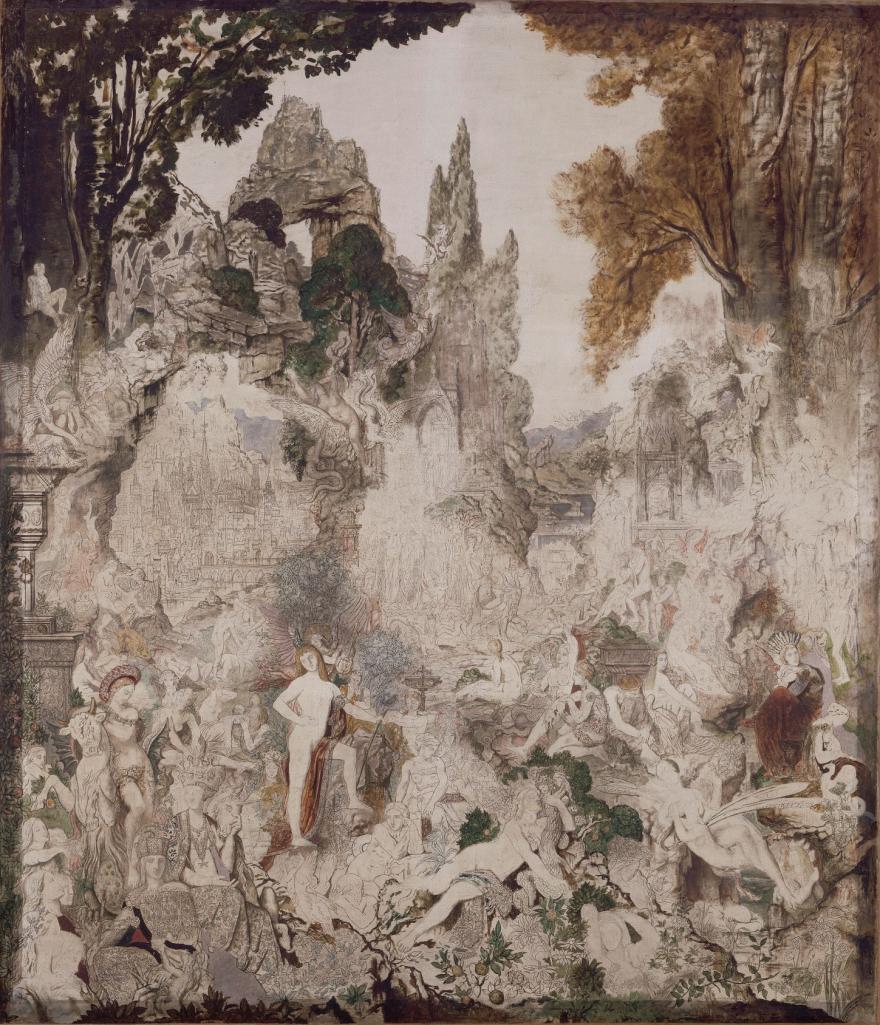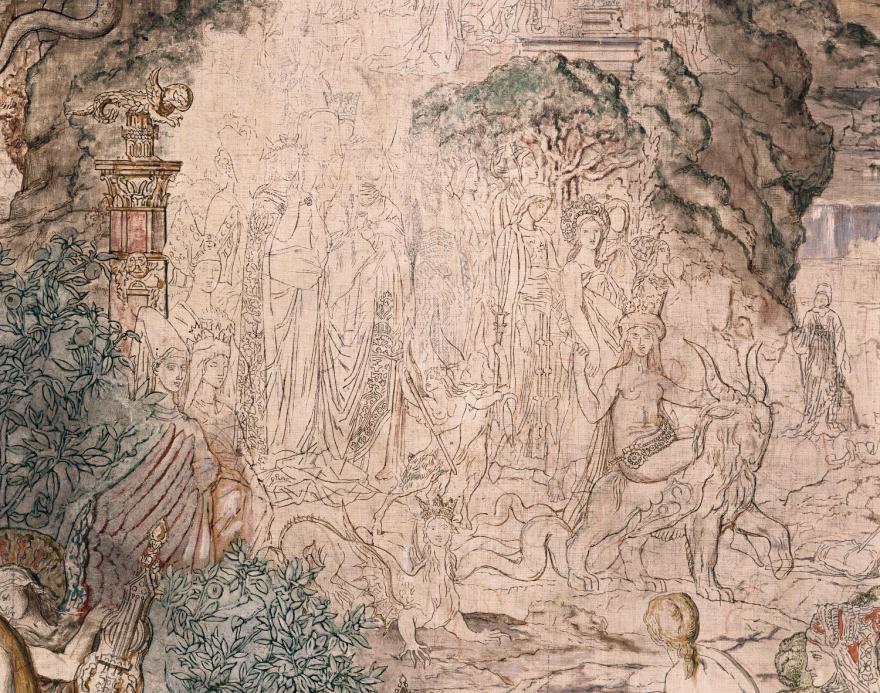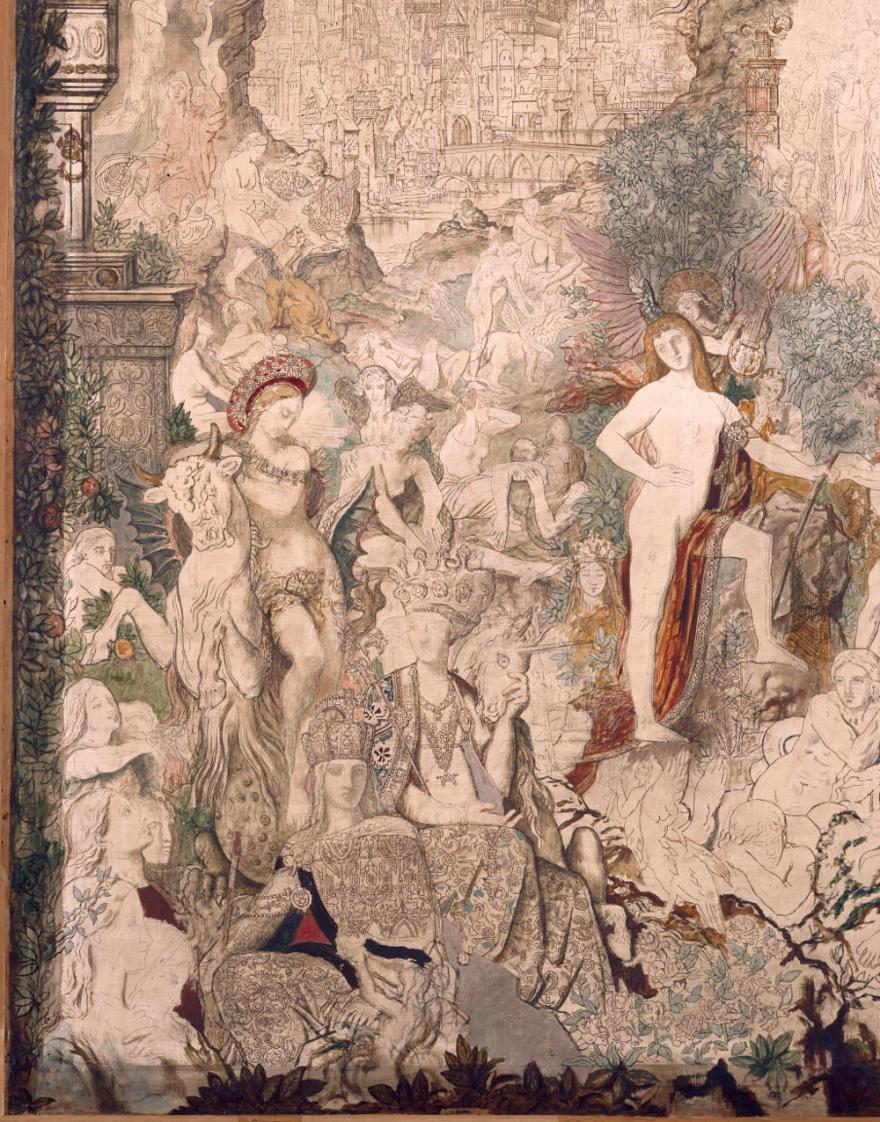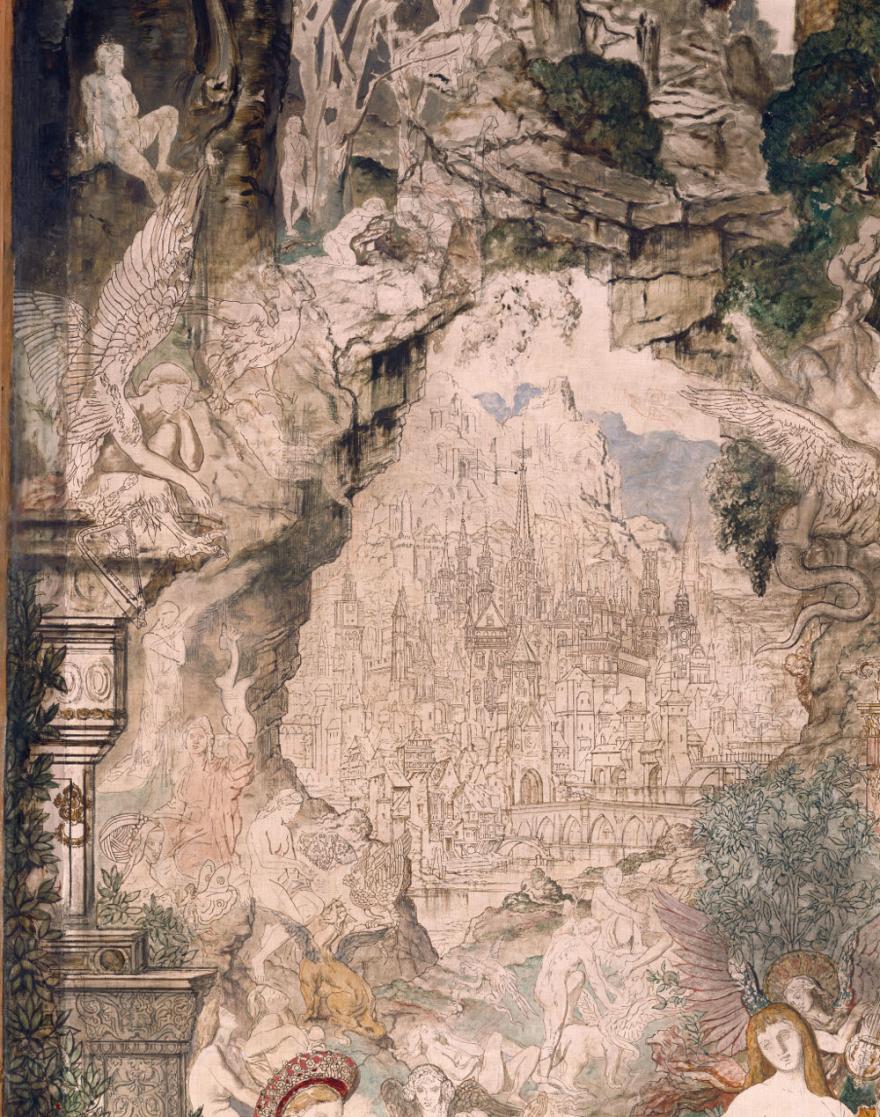Choix d'œuvres
The Chimeras [Les Chimères]
Started around 1880, this large painting, which with its muted tones and elegant drawing looks more like a medieval tapestry, was never finished. Moreau dates it to 1884, the year of his mother’s death. Its composition was inspired by Vittore Carpaccio’s The Crucifixion and the Glorification of the Ten Thousand Martyrs on Mt Arat, of which Moreau had made several studies at the Gallerie dell'Accademia in Venice. Its iconography is complex.
Subtitled Satanic Decameron, it brings together: “ […] every form of passion, fantasy and caprice of women”. The figures are usually accompanied by the monster - the chimera created by their imagination. In the centre, we can see the allegory of Lust astride a goat, and lower down an enigmatic figure – Eve? – embracing a serpent with a human head. On the right, a woman – Europa? – is seated on the back of a winged bull; another, richly dressed and stroking the head of a Unicorn, could be the sister of the Lady and the Unicorn, the central figure in the six famous tapestries in the Musée de Cluny woven around 1500. A semi-nude woman holding a staff has stopped to listen to the voice of an angel, or rather the music from his instrument that fills her ears. The women here are at different stages of spiritual development.
The steep rocks and mountains symbolise the route they still need to follow for salvation, to be forgiven for their sins. Redemption is symbolised by a small cross barely visible on the top of a mountain: “The last stage of life, the final regenerative and salutary test, the last refuge of the Being who has managed to avoid or defeat, after cruel ordeals, the chimeric dream, the terrible dream of ruin, pain and death.”

![The Chimeras [Les Chimères]](/sites/moreau/files/o_cat.39_0.jpg)
![The Chimeras [Les Chimères]](/sites/moreau/files/o_cat.39-a.jpg)
![The Chimeras [Les Chimères]](/sites/moreau/files/o_cat.39-b.jpg)
![The Chimeras [Les Chimères]](/sites/moreau/files/o_cat.39-c_1.jpg)



